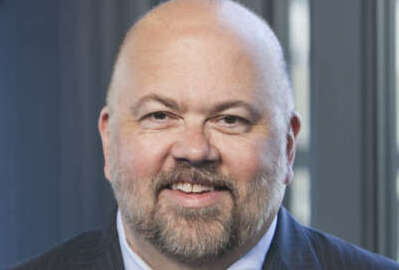
Is the civil service unbreakable?
The processes that the civil service uses may be broken, or at least badly in need of repairs, but the civil service workforce is far from broken.
This column was originally published on Jeff Neal’s blog, ChiefHRO.com, and was republished here with permission from the author.
We often use terms like “broken” to describe the General Schedule pay system and other aspects of the civil service. That made me start thinking about the civil service rules and and the civil servants themselves. Are they broken? If not, can they be broken?
Let’s start with the rules. As I have said before, I believe the core of the the civil service system — the merit system principles — is sound. Those ideas, including equal employment opportunity, fair treatment of employees, equal pay for equal work, using the federal workforce efficiently and effectively, and maintaining high standards of integrity, conduct and concern for the public interest, were valid when they were written into law and they remain the cornerstone of the civil service. They are not broken in any way. They could be, however, if an attempt to make federal employees “at will” became law. Being able to fire employees for no reason at all would break the structure of the civil service and undermine the government’s ability to function effectively.
Other parts of the civil service rules are either broken or on the verge of breaking. The general schedule was created at a time when more than 75 percent (1,013,000) of white collar federal workers were clerks. Back then, the workforce was spread out over 18 GS grades (GS-16, 17 and 18 later became the Senior Executive Service). Pay compression was not a problem, and the number of higher graded employees was much smaller. Today the government has only 111,000 clerks, and they are less than 6 percent of the government’s 1,896,000 white collar workers. There are more than 925,000 employees in grades GS-11, 12, 13, 14 and 15. When I have talked about this with others, the normal reaction is that the problem is solving itself because so many employees are in alternative pay systems. The thinking is that the GS is shrinking rapidly. That is not correct — GS positions still comprise more than 75 percent of the white collar workforce.
Other aspects of civil service rules are also not working well. It is becoming virtually impossible to find people who believe the hiring process works well. That is because it does not work well at all. The pay rules are inflexible. The complaint, grievance and appeals processes are cumbersome and overlapping. The process of dealing with poor performers is not working well (according to more than 70 percent of federal workers). All of those add up to a civil service structure that does not work well.
Even with all of those problems, it is hard to say that the civil service structure is broken. Agencies hate the hiring process, but they are eventually able to fill most of their jobs with good employees. The pay processes are bad, but quit rates for pay reasons are generally not a big problem. The number of separations (quits, retirement, deaths, RIFs and removals) from permanent federal jobs runs about 6.8 percent. If we take out the retirements, it falls to 3.5 percent. While some occupations and agencies may have problems, the overall turnover rate is not bad at all. But what about the agencies with morale problems? Let’s look at the Department of Homeland Security (DHS), the lowest ranked agency in the Partnership for Public Service “Best Places to Work” rankings. DHS does better than average, losing only 6.6 percent of its permanent employees in FY 2016. If we take out retirements, the number is 4.3 percent. Still not bad.
When we look at all of the problems with the civil service, and all of the dire warnings from good government organizations like the Partnership for Public Service and the National Academy of Public Administration, and from current and former government leaders (including me), why is it that the civil service is not going to hell in a hand basket? With all of these problems, the government should be falling apart.
That leads me to the second part of the answer to my original question. Is the civil service broken? For now, the answer is no. The civil service is not broken. The mid-20th century rules certainly need to be reformed to match the current role of government and today’s labor market, but the civil service still works because of the civil servants. The 2 million people who work for the government are the reason it still works.
Most federal workers (90 percent) believe the work they do is important. While others might disagree, I think they are right. More than 300 million Americans and billions of people around the globe rely on the work of federal employees. More than 70 percent of feds say their work gives them a sense of accomplishment, while 83 percent like the kind of work they do. They think their agencies could do more to deal with problem employees, but it is clear that most federal workers like the work they do.
The reason I believe the federal workforce is not broken goes much deeper than just caring about the mission and liking the work. The best example I can think of happened when I was the HR director for the Defense Logistics Agency. On September 12, 2001, most employees were told they could stay home. The nation was in shock from the terrorist attacks, and we expected many people would want to stay home with their families. When I drove to work that morning, the line of cars waiting to get through the gate was huge. Rather than staying home, they reported for duty. It was not a bunch of goof-offs happy to get a free day off. It was thousands of dedicated civil servants who showed up to work.
The processes that the civil service uses may be broken, or at least badly in need of repairs, but the civil service workforce is far from broken. Those civil servants are the reason antiquated processes are made to work. They are the reason turnover is not wrecking the government. They are the reason government still works, even in the face of years of political dysfunction in Washington.
It is probably possible to break the civil service workforce, but years of pay freezes, being used as a political football, and being badmouthed by politicians and others have not done it. I believe the civil service workforce is far more resilient than most people give them credit for being. In fact, my guess is that the attacks have just made them stronger. As long as federal workers maintain the determination I have seen from them in the past 40 years, I am confident that they will keep government working. They may bend, but I do not think they will break.
Jeff Neal is a senior vice president for ICF and founder of the blog, ChiefHRO.com. Before coming to ICF, Neal was the chief human capital officer at the Homeland Security Department and the chief human resources officer at the Defense Logistics Agency.
Copyright © 2025 Federal News Network. All rights reserved. This website is not intended for users located within the European Economic Area.



